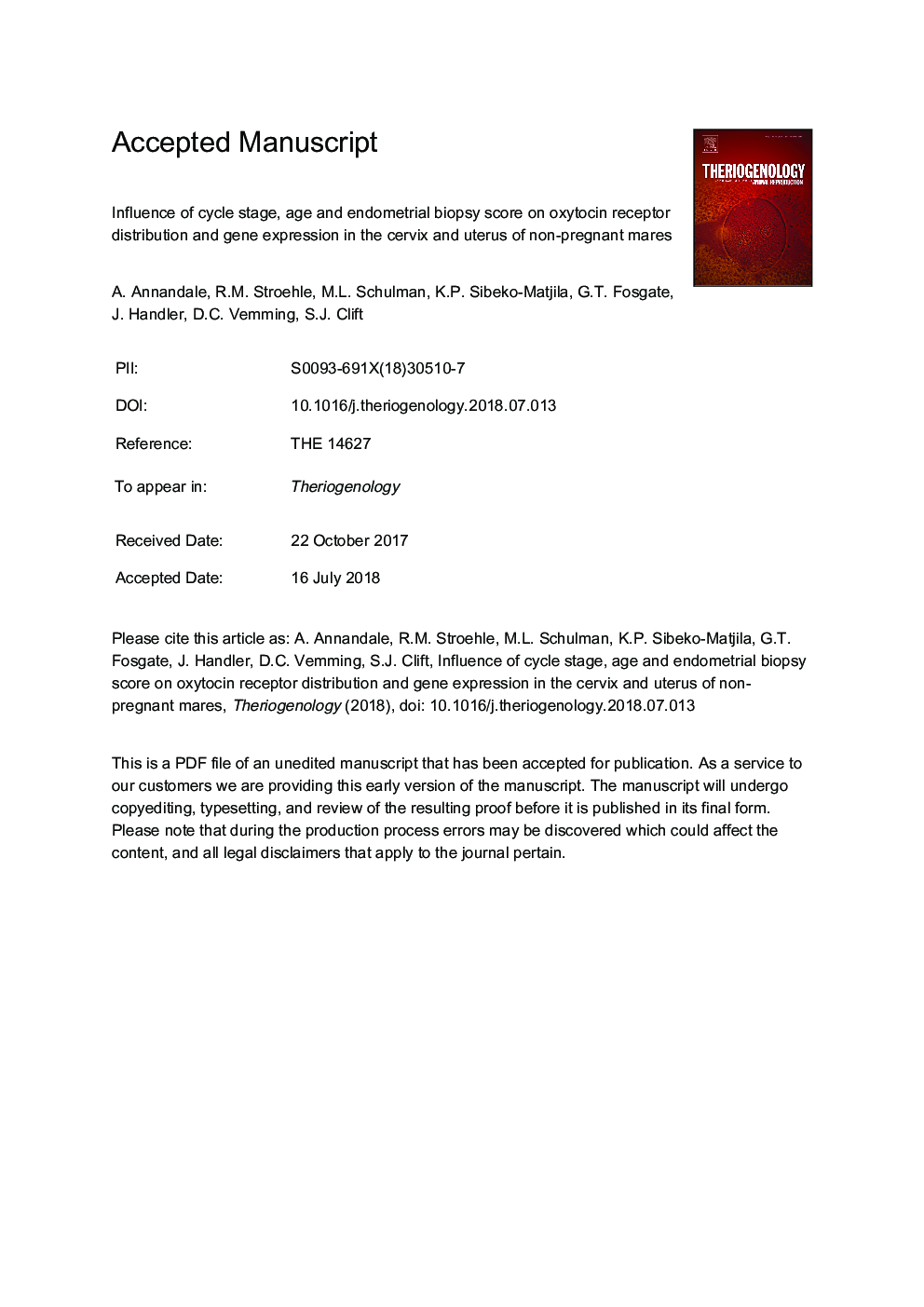| Article ID | Journal | Published Year | Pages | File Type |
|---|---|---|---|---|
| 8426045 | Theriogenology | 2018 | 32 Pages |
Abstract
Immunohistochemistry showed a similar pattern of OR distribution in uterus and cervix, with the exception of the glandular epithelium, absent in the cervix. Uterine ORs were localized in endometrial luminal and glandular epithelia, transmural vascular endothelium, sub-epithelial and peri-glandular stromal cells and myometrial smooth muscle cells. The OR labeling intensity was consistently greatest in the vascular endothelium. Real-time qPCR showed a higher OR gene expression in myometrium compared to cervix (Pâ¯=â¯0.001) and endometrium (Pâ¯=â¯0.009). There was no difference in OR gene expression between cervix and endometrium (Pâ¯=â¯1.0). Oxytocin receptor gene expression was significantly higher during the non-luteal phase in both combined uterine tissues (endometrium and myometrium) and myometrium. Oxytocin receptor distribution and gene expression were not influenced by a mare's age or endometrial biopsy score. As endometrial biopsy score and mare age were not predictors of OR gene expression, deficient OR gene expression is unlikely to be associated with DUC.
Keywords
Related Topics
Life Sciences
Agricultural and Biological Sciences
Animal Science and Zoology
Authors
A. Annandale, R.M. Stroehle, M.L. Schulman, K.P. Sibeko-Matjila, G.T. Fosgate, J. Handler, D.C. Vemming, S.J. Clift,
